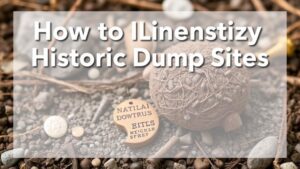Detecting Near Historical Livestock Pens for Dropped Coins and Tools
Detecting Near Historical Livestock Pens for Dropped Coins and Tools
The study of historical livestock pens plays a crucial role in understanding agrarian societies and their economic activities. Among the artifacts commonly found in these areas, dropped coins and tools provide significant insight into the day-to-day operations of past communities. This article explores the techniques and methodologies employed in detecting these artifacts, focusing on the historical context, possible locations, and the use of various tools for excavation and analysis.
Historical Context of Livestock Pens
Livestock pens were vital components of agricultural life, serving not just as enclosures but also as hubs of economic activity. were where farmers managed their herds, demonstrating the significance of livestock in agrarian economies. Historical records suggest that from the Middle Ages through to the 19th century, livestock ownership was indicative of wealth and status. As a result, the area surrounding these pens has become a treasure trove for archaeologists and metal detectorists alike.
The remnants of livestock pens may still contain items that reflect the everyday lives of those who worked there. Coins dropped during transactions and tools used for animal husbandry can provide valuable data. According to the National Park Service, artifacts found near historical sites often reveal cultural practices and economic exchanges that shaped the region.
Identifying Potential Locations for Investigation
Targeting locations near historical livestock pens requires an understanding of both physical geography and social history. The following factors can identify promising spots for detecting dropped artifacts:
- Proximity to Water Sources: Livestock pens were often set up near streams or ponds for easy access to water.
- Pathways: Look for trails historically used by farmers transporting livestock; dropped items are common in such areas.
- Crop Fields: Nearby agricultural fields may have had livestock pens serving specific purposes, indicating a higher likelihood of finding artifacts.
Utilizing Technology and Techniques
Modern technologies have revolutionized the methods used for detecting historical artifacts. Among the most effective tools are metal detectors, ground-penetrating radar (GPR), and GIS mapping technologies. Each method has its benefits and can be used strategically based on the specific context of the investigation.
Metal Detectors: These devices are essential for detecting metals that signal the presence of coins and tools. A study published in the Journal of Archaeological Science revealed that metal detectors have a retrieval rate exceeding 90% for surface items. Advanced models allow users to adjust sensitivity settings, which is crucial when searching in areas with mixed metals.
Ground-Penetrating Radar (GPR): GPR is beneficial for identifying sub-surface structures without excavation. This technology uses radar pulses to image the subsurface and can reveal disturbances or anomalies associated with historical livestock pens. Research conducted by the University of Southern California indicates that GPR can effectively locate the outlines of pens, providing a focal point for artifact recovery.
GIS Mapping: Geographic Information Systems (GIS) integrate various forms of data to analyze locations more effectively. By overlaying historical maps with current topographical data, researchers can project areas of high interest for exploration. A recent project at the University of Minnesota successfully matched historical land use patterns with modern geography to identify fruitful excavation sites.
Case Studies and Real-World Applications
Several successful case studies across different regions illustrate the efficacy of using these techniques. For example, excavations in Virginia uncovered a 19th-century livestock pen where researchers, by employing GPR and metal detectors, recovered a trove of tools, ranging from horseshoes to spades, alongside several antique coins. findings led to a reevaluation of the economic interactions between local farmers and commerce at the time.
Another noteworthy example comes from a site in Texas that was once an important cattle ranch. Here, metal detecting combined with community involvement unveiled not only coins but also a complete set of livestock husbandry tools. The archaeological team noted that the presence of these items suggested a highly developed livestock management system, contributing data on regional agronomy.
Conclusion and Actionable Takeaways
Detecting artifacts near historical livestock pens significantly enhances our understanding of agricultural practices and economic transactions in the past. By identifying the right locations, employing modern technology like metal detectors and GPR, and referencing historical context, researchers can efficiently uncover valuable artifacts.
Individuals interested in conducting their own investigations can follow these actionable steps:
- Research local history to identify historical livestock pens.
- Obtain metal detectors or collaborate with local archaeological groups.
- Map out potential sites using GIS to align historical locations with modern geography.
- Document findings meticulously to contribute to local historical knowledge.
Engaging in this exploration not only satisfies curiosity but also enriches our collective understanding of agrarian heritage, celebrating the role of livestock in shaping economic landscapes.

